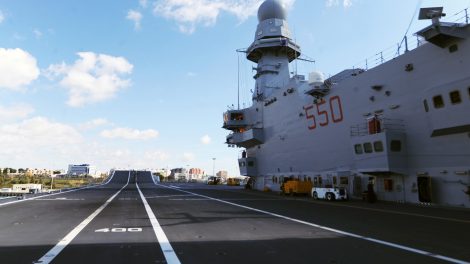What’s going on in the South
The situation on the southern front is complex, with several potential hotspots of destabilisation. In recent years, NATO has acknowledged the need to project stability on its southern flank, noting that migratory flows and jihadist terrorism are a real threat to the alliance.
On the Eastern side:
- Syria remains critical, with players such as Russia, Iran and Turkey involved. Syrian developments also have direct repercussions on Iraq – where NATO will gradually take over the counter-terrorism role that Operation Inherent Resolve carried on.
Northern Africa is characterised by a general condition of instability.
- In Egypt, the regime is controlling popular discontent;
- Libya is still without a government. Actually, it has two, a situation heightening the risk of armed clashes, as it already happened;
- the authoritarian turn in Tunisia risks being the prelude to another turbulent season; Algeria and Morocco are in a condition of extreme tension because of their quarrel in the Western Sahara.
Finally, the situation in the Sahelian region is highly volatile:
- Burkina Faso, Mali and Chad are institutionally destabilised;
- Power and economic dynamics in the East Med (as a geopolitical quadrant) could once again cause a flare-up around the homonymous gas pipeline, which has gained newfound interest following the Russian war in Ukraine.
Maintaining focus
Nevertheless, the Alliance is well aware of the need to project stability on its southern flank, and has signalled in the past it is keen to keep a tight focus on it.
- Even as the US looks increasingly to the Indo-Pacific, the Biden administration’s decision to appoint General Christopher Cavoli, who boasts a lengthy experience in Italian military bases, as Supreme Commander in Europe, testifies to Washington’s interest in the region.
- Still, it will be up to the Common European Defence framework to take responsibility for the southern flank. To that end, Italy will have to work hand in hand with partners such as Spain and Greece, to ensure that the next Strategic Concept, due to be presented at the NATO summit in Madrid next June, keeps the right amount of focus on the Med.
Italy’s role
Italy is a key asset in the area and actively patrols NATO’s Southern front, both through national missions and by participating in Alliance operations.
- It participates in Operation Sea Guardian, conducted in synergy with Operation Sophia and the EU’s Frontex Coast Guard and Border Guard initiatives. These are integrated multinational maritime forces conducting maritime security operations.
- It also takes part in NATO’s permanent naval groups in the Med: Standing Maritime Group 2 (SNMG2), with patrolling and aero-maritime surveillance tasks, Standing NATO Mine counter-measures group (the name is pretty self-explanatory).
- The country’s strategic dimension is also underscored by the presence of the NATO Hub in Naples, and General Cavoli is well-aware of its importance, having spent a good chunk of his European deployment there.




